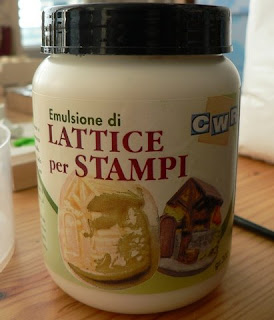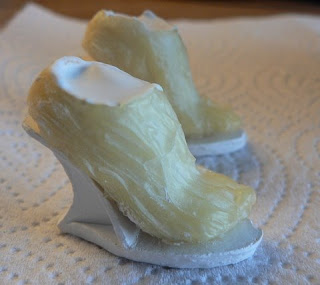
I was not going to give up, though, and tried another pair, this time for the American Model.
The boots are made of leather and there is a zipper on the back. I did not even try to sew the zipper, I just glued it in place. The front has eyelets for the strings. This way, the boots fit tight, but you only need to loosen the strings a little when putting the shoes on the doll's feet.

I'm sure the neighbor downstairs was not happy when I started banging those eyelets in place. There are 48 of them in total and each required a couple of hard hits with the hammer.
I would have preferred metal color, but I only had the required amount in pastel colors and pink was most suitable of them.
There wasn't enough of that dark purple leather, so the boots ended up having two colors. Actually, that was a good choice considering the color of those eyelets.

Then I made the heels using modeling clay. The outer soles are made of leather and the strings are made of cotton yarn.

The boots are shown here in plaster castings of the doll's feet.
Original Finnish posts: March 2, 2007, and February 16, 2006












